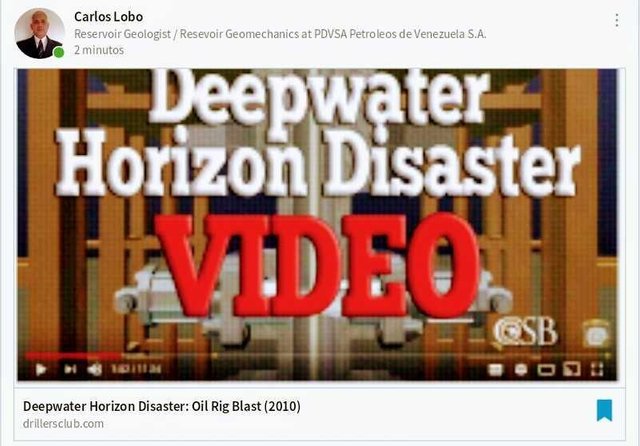
https://www.linkedin.com/feed/update/urn:li:activity:6393774766926413824
Surce: DrillersClub
At 9:45 P.M. CDT on 20 April 2010, during the final phases of drilling the exploratory well at Macondo, a geyser of seawater erupted from the marine riser onto the rig, shooting 240 ft (73 m) into the air. This is a short explanation with the CSB Video below titled “Oil Rig Blast (2010)”.
This was soon followed by the eruption of a slushy combination of mud, methane gas, and water. The gas component of the slushy material quickly transitioned into a fully gaseous state and then ignited into a series of explosions and then a firestorm.
An attempt was made to activate the blowout preventer, but it failed. The final defense to prevent an oil spill, a device known as a blind shear ram, was activated but failed to plug the well.
At the time of the explosion, there were 126 crew on board; seven were employees of BP, 79 of Transocean, there were also employees of various other companies involved in the operation of the rig, including Anadarko, Halliburton and M-I SWACO. Eleven workers were presumed killed in the initial explosion.
The rig was evacuated, with injured workers airlifted to medical facilities. After approximately 36 hours, Deepwater Horizon sank on 22 April 2010. The remains of the rig were located resting on the seafloor approximately 5,000 ft (1,500 m) deep at that location, and about 1,300 ft (400 m) (quarter of a mile) northwest of the well.
The resultant oil spill continued until 15 July when it was closed by a cap. Until that point the well was gushing at the seabed and causing the largest oil spill in U.S. waters. Relief wells were used to permanently seal the well, which was declared “effectively dead” on 19 September 2010.
Deepwater Horizon was an ultra-deepwater, dynamically positioned, semi-submersible offshore oil drilling rig owned by Transocean. Built in 2001 in South Korea by Hyundai Heavy Industries, the rig was commissioned by R&B Falcon, which later became part of Transocean, registered in Majuro, Marshall Islands, and leased to BP from 2001 until September 2013.
In September 2009, the rig drilled the deepest oil well in history at a vertical depth of 35,050 ft (10,683 m) and measured depth of 35,055 ft (10,685 m)[10] in the Tiber Oil Field at Keathley Canyon block 102, approximately 250 miles (400 km) southeast of Houston, in 4,132 feet (1,259 m) of water.
It was terrible...
Hi! I am a robot. I just upvoted you! I found similar content that readers might be interested in:
https://en.wikipedia.org/wiki/Deepwater_Horizon
Downvoting a post can decrease pending rewards and make it less visible. Common reasons:
Submit